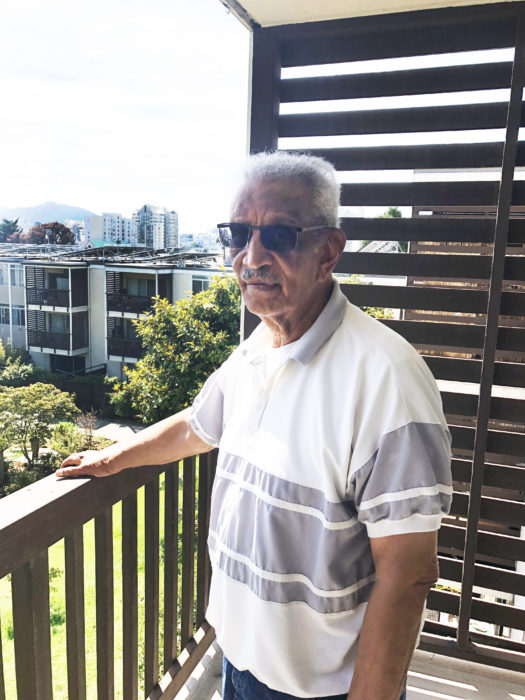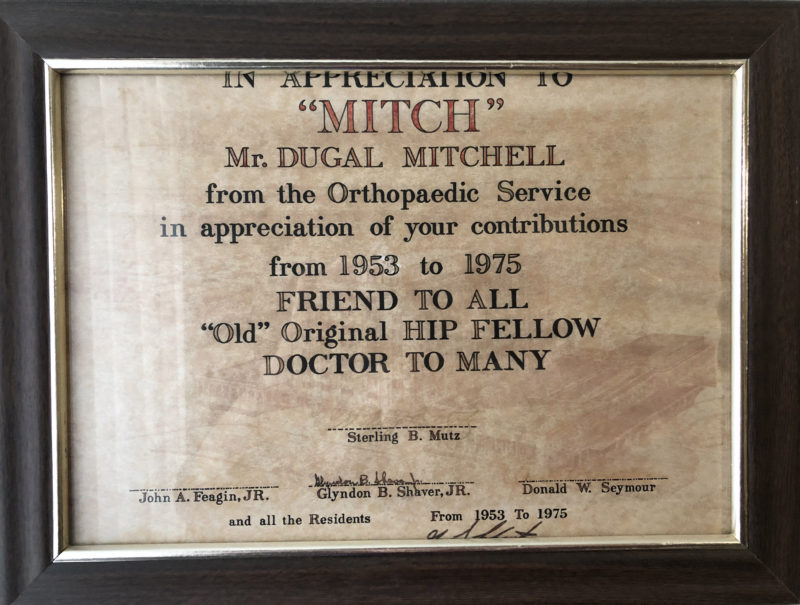Army medic settles into good life and his own home after leaping discrimination hurdles
Dugal Mitchell spent five years in the Army as a medic, two in the Korean War. After all he did and saw, his passion was to become a doctor. But when he came home and applied to the University of Texas Medical School, he was turned down.
It was the early ‘50s and segregation was at its height.
“They told me I had to go to my own school,” said Mitchell, now 91. “I was heartbroken.”

Racial discrimination was a blow to his ambitions then and later. But chance, determination and a few key choices put him back on a career track, earned him a respected place in society and settled him in a supportive community in which to raise his family.
“I picked myself up and followed a family friend to San Francisco where I got a job in the U.S. Department of Defense as a medic at Letterman Army Medical Center.”
Mitchell fell into the medical field when he enlisted in the army in 1949 right out of high school. To avoid the draft, he and his buddy, both musicians, signed up to play in the military band. But he declined because “they insisted we study arrangements for 14 weeks. I didn’t want to do that because I felt I already knew those arrangements.”
His sergeant then gave him the choice between the signal corps and the medics. “I didn’t know the first think about a band-aid so I told him to send me to the medics.”
Seizing opportunities
And he didn’t regret not joining the band. “Once I got into the medical field, and I learned so much, I really enjoyed it.” And once he learned the Army would pay for college courses, “Wherever I was stationed, I took courses.”
After establishing himself as a medic at Letterman, he started moonlighting for the city as part of an ambulance team. “Back in the day, the city had emergency medical stations around the city. Ambulances would take people to the nearest station.”

As Mitchell’s life was taking shape, he was presented with the opportunity to attend a two-year paramedic school for free at Stanford University. “I jumped at the chance.” He worked at Letterman at night, moonlighted on his days off and went to school during the day.
And as a paramedic in the Department of Defense, he gained top security clearance. “I was in attendance when Ford and Carter debated at the Palace of Fine Arts in 1976.” He also worked with the Coast Guard to rescue people who jumped off the Golden Gate Bridge. “I was very proud that we saved three people.”
On his living room wall is a framed letter from the Surgeon General for “Mitch” upon his retirement 40 years ago: “Your energy, decisiveness and keen spirit have been an example to corpsmen in the Ambulance Section and Emergency Room for all those years.”

His met his future wife at Letterman. He and Leona, a military nurse, dated two years then married in 1961. They lived in a one-bedroom apartment in a four-unit building at Turk and Lyon streets that Mitchell managed for the owner. After the birth of their first child, he started looking for larger accommodations.
At that time, San Francisco was in an uproar over “urban renewal.” Writer and activist James Baldwin called what was basically slum clearance “Negro removal.”
“I wanted to buy a junior-five or six-house in Alemany, but the realtors wouldn’t sell me a house there. They said I had to go to Ingleside.”
In response to this social upheaval, the International Longshoremen’s Union financed a racially integrated housing development called St. Francis Square Cooperative between the Western Addition and Japantown neighborhoods. Mitchell was able to get a three-bedroom apartment when it opened in 1964.
“My wife and I raised our two boys here. It’s a fantastic community.”
Avoiding bitterness
St. Francis Square Cooperative is an owner-occupied residential complex, consisting of 297 apartments housed in 12, three-story walk-up buildings oriented around shared, landscaped courtyards. “Yes, I still walk up three flights of stairs several times a day.”

As a cooperative, a democratically member-elected board of directors oversees property management, while committees plan ongoing projects to improve the quality of life. “The coop is run better than the government in Washington,” Mitchell said.
Mitchell’s wife passed away three years ago, but he continues to make a fulfilling life for himself. For one thing, despite the racial barriers he’s faced, he said, “I made up my mind I was never going to be bitter.”
He also determined that staying healthy and staying involved with family and friends was key to continuing to live a good life.
Mitchell is in good health, his feet excepted. “I have neuropathy so I can only walk seven blocks or so before the pain sets in.” Because of the neuropathy he said he might have to give up driving. But so far, he has remained steadfast against taking drugs. “I look at the side effects. I’m not going to be depressed or commit suicide.”
He is very close to his two sons and their families. “I live in between my one son in Vacaville and the other in San Jose. We visit all the time.” And he volunteers on his coop’s rules committee. “We take the state coop rules updates and publish them in a small booklet for the residents.”
‘The Dudes’
He belongs to a men’s group, “The Dudes,” where they talk about what’s going on in their lives as well as in the city and national politics. “We five meet every week in one of our apartments,” he said. “Whatever we’re interested in, we’ll talk about it.”
And he travels. This year, he’s planning a trip with friends to places in Europe he hasn’t seen. Since retiring in 1989, he’s been part of a large group of about 20 friends that cruise every couple of years. He has been all over the Caribbean and much of Europe.
“My father went through the Panama Canal and I did also; It was the most exciting trip I ever had.”





